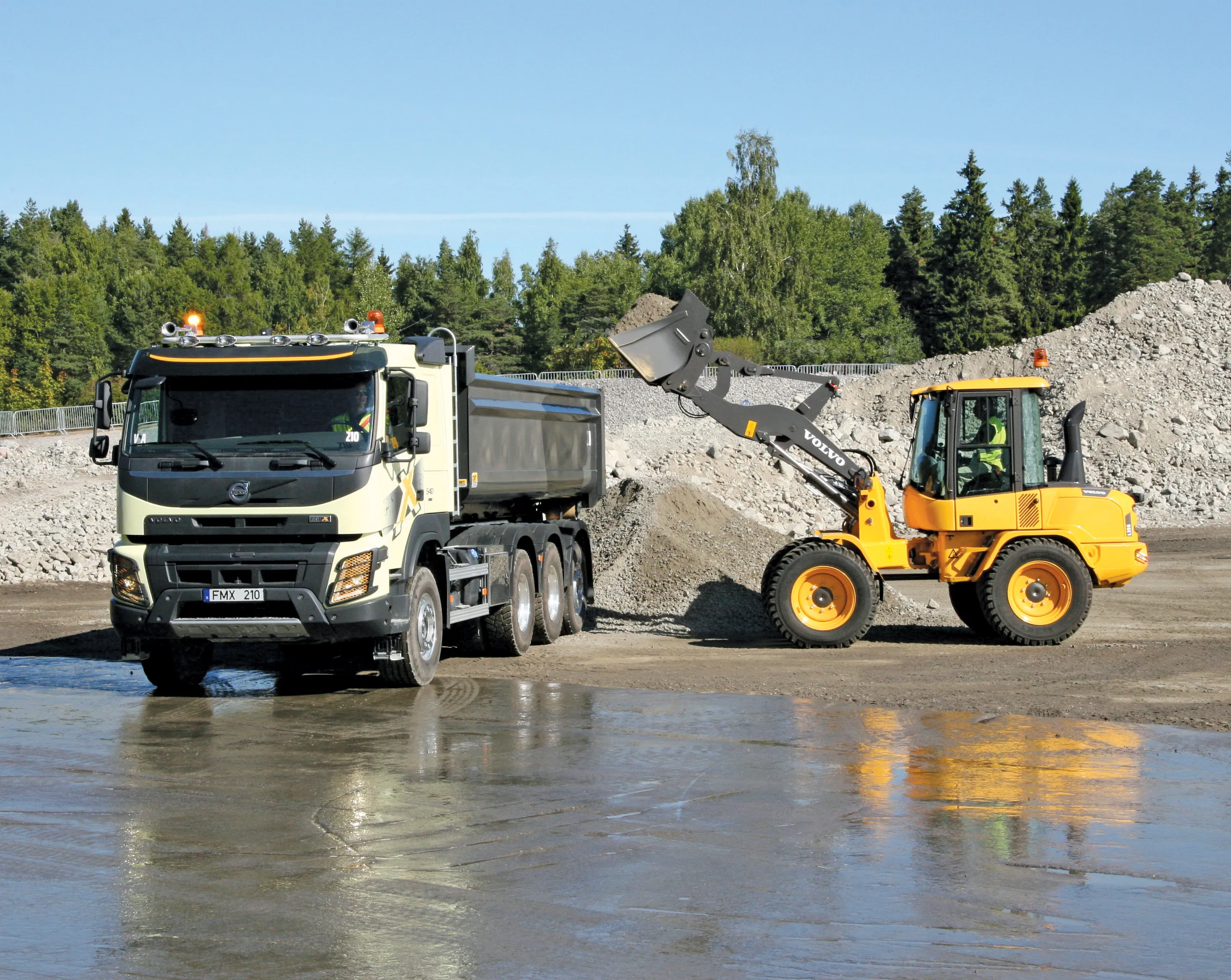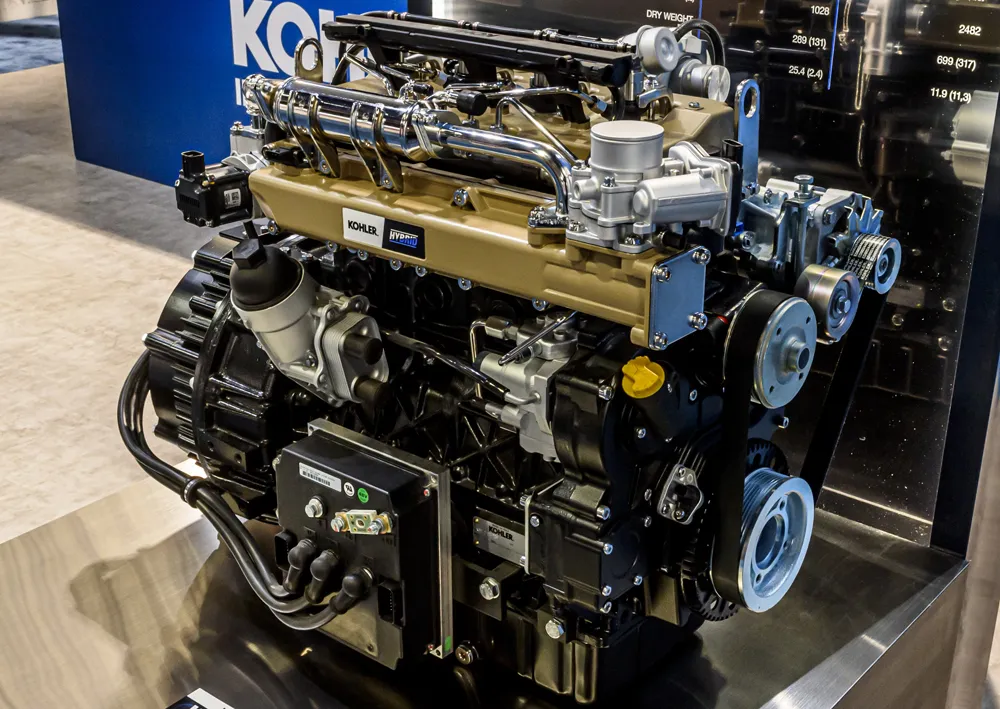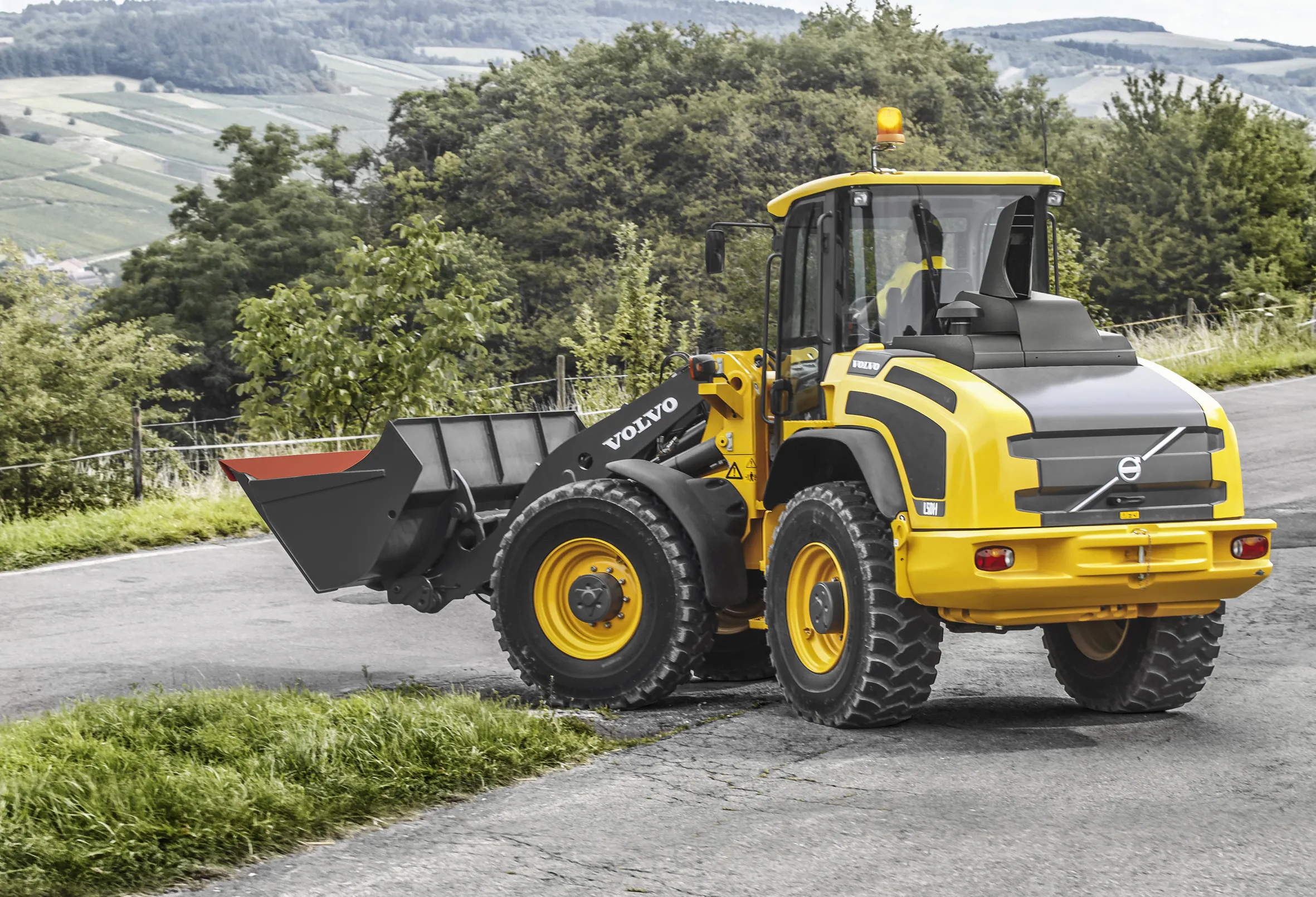Volvo CE’s redesigned soil compactors offer improved cab designs and better performance, while the firm is offering other glimpses of future technologies - Nick Johnson reports This summer marked the 55th anniversary of Volvo Days – an event that enables Volvo Construction Equipment customers to find out more about the company’s latest products and services. An impressive machine demonstration at the Volvo Customer Centre in Eskilstuna, Sweden provided the official launch for several new models, including s
December 17, 2013
Read time: 7 mins

This summer marked the 55th anniversary of Volvo Days – an event that enables Volvo Construction Equipment customers to find out more about the company’s latest products and services. An impressive machine demonstration at the Volvo Customer Centre in Eskilstuna, Sweden provided the official launch for several new models, including some much-improved self propelled soil compactors.
The three new single drum, self-propelled vibratory soil compactors are the SD75, which replaces the former SD77, an updated SD115 and the SD135 that supersedes the SD130. All three new models are powered by the latest Stage IIIB/Tier 4 interim emissions compliant Volvo engines, instead of the
The 8.2tonne class SD75 with its 1676mm wide drum gets a Volvo D3.8 engine rated at 75kW, while the 12.5tonne class SD115 and 14tonne class SD135 both have a 2134mm wide drum and a 110kW Volvo D4 engine. Interestingly, the D4 engine is also used to power Volvo’s popular 14tonne class EC140D tracked excavator.
To help these Volvo Stage IIIB/Tier 4i engines achieve their emissions compliance, they have a diesel oxidation catalyst (DOC) and a diesel particulate filter (DPF) with active regeneration. Selected to produce high torque at low rpm, the engines also feature crankcase ventilation and cooled exhaust gas recirculation (CEGR).
The most noticeable change on the new roller trio is that they now have Volvo cabs similar to those found on the company’s wheeled loaders. Complete with a deeper front screen to maximise forward view, these ROPS/FOPS certified, quiet cabs ride on shock-absorbing mounts to enhance operator comfort.
Inside the cab there is a new Contronic instrument panel that continuously monitors the compactor’s operation and performance in real time. The operator console also incorporates an easy to adjust the vibration frequency control. Dual frequency is standard whilst Volvo can also provide a five-frequency option to increase versatility.
The larger SD115 and SD135 can be purchased with the option of a Smart Power mode, which is said to reduce fuel consumption by up to 30% while lowering engine noise levels and emissions — all without affecting compaction performance.
The SD75, SD115 and SD135 rollers can be fitted with smooth drums to compact granular soils or padfoot drums to Deal with cohesive material. There is also the option of two-piece, padfoot Shell kit which clamps around the smooth drum.
The new SD compactors have gained a more rounded, and easier to open, engine canopy. Rather than the previous rear hinged canopy, the new canopy angles up against the back of the cab to provide better service access.
The Volvo Days demonstration also saw the official introduction of two updated compact articulated wheeled loaders. Replacing former B series units, the newcomers are L30G and L35G that can be fitted with buckets having capacities of 0.9-1.5m3 and 1-1.5m3 respectively.
The big change is that both the L30G and L35G are powered by the latest Stage IIIB/Tier 4 Interim emissions compliant Volvo D3.3D engine rated at 55.4kW. Complete with hydrostatic transmissions, these loaders feature the latest Volvo cab and high ground clearance axles.
The two new loaders come as standard with a powerful Z-bar loader linkage. As an option, the L35G can be purchased with an optional TP linkage that combines the benefits of different linkage systems for high breakout torque and parallel movement.
During the summer, Volvo CE also staged an innovation forum during which the engineering team confirmed that research is being carried out into the viability of alternative fuels for construction machinery. Here their task is being aided by the pioneering work that has already been carried out by their colleagues at Volvo Trucks. Fuels being evaluated for powering plant in the future include dimethyl ether (DME) and gas.
In the past Volvo CE has been surprisingly open about some of its future design ideas. At the end of the last decade it produced four interesting concept models – the Gryphin wheeled loader, the Syfinx tracked 360° excavator, the Centaur articulated dumptruck and Fenix asphalt paver.
It was envisaged that the Gryphin loader could have an electric hybrid power source and, when hydrogen becomes commercially available, this could be upgraded to a fuel cell power source. Other features proposed for the concept loader were electric wheel motors and a regenerative power system to recharge the machine’s batteries during braking.
Volvo CE was an early advocate of hybrid technology. Although a hybrid Volvo construction machine has yet to go into production, the company did exhibit a prototype L220 Hybrid wheel loader at the Conexpo construction equipment exhibition in Las Vegas back in 2008.
The L220 Hybrid used parallel hybrid technology and had an electric motor/generator coupled to high power batteries. However, tests showed it did not produce sufficient fuel savings to render it commercially viable. Subsequently Volvo focused on introducing its OptiShift driveline technology which could, more cost-effectively, provide a higher fuel saving of up to 15%.
Now, according to Gunnar Stein, Volvo CE’s global director for Driveline Systems, the next step in driveline technology for a Volvo wheeled loader could be a CVT (Continuously Variable Transmission). Because it does not require a torque converter, a CVT could save up to 25% of fuel.
He confirmed that Volvo is also still developing a hybrid wheeled loader solution and that it has chosen an electric serial system. The design team see advantages in having an engine/generator combination with no direct mechanical connection to wheels or hydraulics. By introducing an energy storage device and electric wheel motors it is envisaged that this type of system should be able to achieve around 50% better fuel efficiency.
It would seem that Volvo could well use next year’s Conexpo exhibition in Las Vegas to show an interesting prototype embodying some of its latest transmission/hybrid thinking. More certain will be the appearance of the company’s next generation articulated dumptrucks, larger excavators and wheeled loaders powered by its Stage IV (Tier 4 Final) emissions compliant engines. Developed as a joint project with Volvo Trucks, these new four and six cylinder engines are claimed to improve fuel efficiency by up to 5% compared to previous models.
The new Stage IV compliant engines incorporate Volvo advanced combustion technology (V-ACT) with superior fuel injection, more effective air handling and an enhanced management system. To achieve the required reduction in nitrogen oxide (NOx) levels, there is a module that combines the selective catalytic reduction (SCR) equipment and a fully automatic diesel particulate filter (DPF).
The SCR process, which requires the addition of a diesel exhaust fluid (DEF) such as AdBlue, works with a cooled external exhaust gas recirculation (E-EGR) system. To drive the exhaust gas recirculation process, there is a variable geometry turbocharger (VGT) on the D13 and D16 engines and a wastegated turbocharger on the smaller power units.
Volvo CE also used its innovation forum to highlight the work of its industrial design department that is based in Gothenburg, Sweden. Following on from the conceptual Gryphin, Syfinx, Centaur and Fenix models, Design Director Stina Nilimaa Wickstrom revealed her team’s thoughts on a futuristic compact excavator.
To enable this concept compact excavator to operate cleanly, quietly and efficiently it is proposed that a big battery could double as both the power source and a counterweight. The designers also envisage using a yellow coloured carbon/Kevlar composite body that could lead 12V DC current to desired parts of the machine.
Another interesting speaker at the Innovation Seminar was Emerging technologies director Jenny Elfsberg. In her appraisal of future technology she highlighted three significant trends – system decoupling, machine intelligence and Total business solutions.
Regarding system decoupling within machines she emphasised the advantages of being able to reduce losses by electronic Controls so that energy is only transferred when needed. She acknowledged the development of electric and hydraulic hybrids but indicated that the future could be towards Total system electrification.
To enhance machine intelligence, Elfsberg envisages more Controls being embedded in machines to enable operators of all skill levels to achieve greater productivity throughout the working day. This could lead to totally autonomous machines for some operations. Interestingly, Volvo CE makes no secret of the fact that it already has driverless articulated dumptrucks under test.









